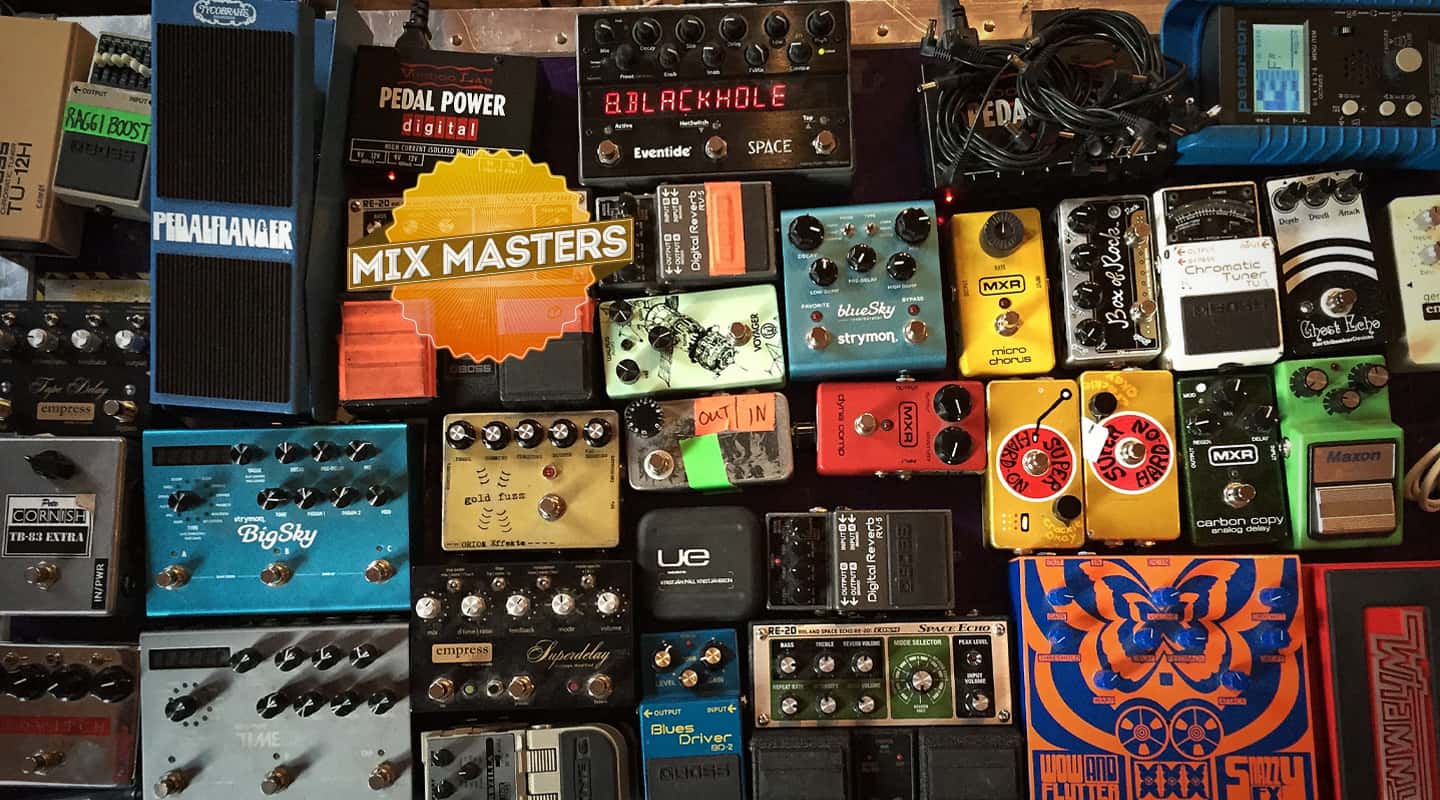
Mix Masters: Rich Costey Sums Up Of Monsters and Men
After shootouts from the US to Iceland, Rich Costey decided the Shadow Hills Equinox summing mixer eclipsed his SSL console. But his downsizing hasn’t reduced the sound of cinematic Icelandic folksters, Of Monsters and Men, one bit.
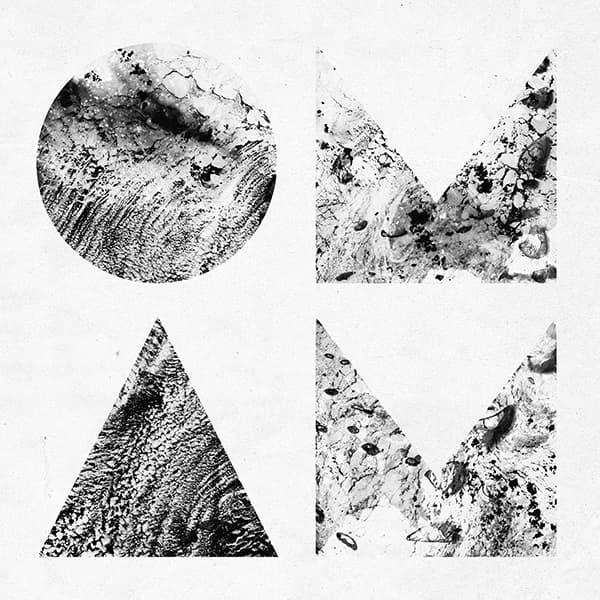
Artist: Of Monsters and Men
Album: Beneath the Skin
Last year, Rich Costey had one of the biggest ‘Eureka!’ moments of his career. It resulted in him radically changing his mix method, and replacing it with a brand new approach, which is, in essence… erm, more or less the same as before. Confused? Read on.
For Costey, long one of the world’s most prominent and dedicated out-of-the-box mixers, it was a watershed event. The ‘more or less the same’ bit consisted of Costey finding an alternative way of laying out his mix in a similar way as he had done on his beloved SSL K series at El Dorado in LA, with the same audio-, effects- and VCA-channel layout, and maintaining his previous outboard signal chains and general workflow.
From El Dorado, he explained how and why he squared this particular circle that put his beloved console largely out of action: “I’ve always mixed on analogue consoles, and have used and even owned nearly every kind imaginable, having occasional romances with vintage Neves, modern Neves, SSL J, SSL G, SSL E, you name it. Each desk offered something special but also brought a certain set of sonic issues that I eventually found myself battling with. I have heard plenty of in-the-box mixes that I like, but whenever I had a go, I was inevitably disappointed by the shallow depth of field, narrowing of the stereo space, and a kind of hollow bottom end.
“Last year I was looking for a summing mixer for my B room and auditioned quite a few. Our process for auditioning summing mixers and even consoles is to pull up a session that is level balanced in the box but is routed out of separate outputs. I’ve been using a Weezer track that I mixed called Troublemaker to do this for a number of years. It’s not a large session so it’s easy to route the entire multi-out of 30 outputs. We align the D/A converter, put all the faders at zero, adjust the panning and hit play, making a straight bounce into my stereo A/D. Frustratingly, none of the summing mixers we auditioned had the punch of a real console except for one, the Shadow Hills Equinox, which sounded amazingly good. It sounded very similar to a Neve 8058. I had problems believing it, so I did more and more tests and started doing stem recalls and radio mixes through it. They all sounded great.
“My next project was the Death Cab For Cutie record, Kintsugi (2015), which I produced and mixed. I started mixing that on the K, but for whatever reason, I felt the mixes could hit a bit harder, and tried to mix them via the Equinox. I ended up mixing most of the songs twice, and in every case we ended up using the Equinox mixes. I have developed a fairly complex routing system in my studio for the SSL, and because I have been mixing on analogue consoles all my life, I have become accustomed to grouping things to certain outputs, and having a certain layout for the session. This way no matter what song I mixed, the layout of my SSL was more or less the same. When I started mixing via the Equinox, I still wanted to have all those elements in place.
“For example, when people use four mics on the bass drum, they often put them on separate tracks rather than combining them, which means you end up EQ’ing each track separately. That’s fine but I also like to have a more holistic approach, combining the bass drum mics into a single place where I can adjust the overall sound. I do that with everything. I have an aux track for the kick, for the snare, for the toms, and so on, which allows for a slightly more macro approach to treating each of these elements and also for running parallel compression on them.
“To copy this approach over to the Equinox we developed a Pro Tools session layout with the recorded tracks at the bottom of the session and built a parallel of my SSL at the top of the session. This parallel consists of about 60 tracks, with audio aux tracks at the top, followed by outboard aux effects tracks, and below them VCA tracks, which mimic the VCA tracks in the middle of the desk. They are then routed to the 30 inputs of the Equinox with a healthy chunk of effects and outboard still going to the SSL K.”

I’ve always mixed on analogue consoles, and have used and even owned nearly every kind imaginable


NORTHERN LIGHTS
Costey’s next project after Death Cab For Cutie was producing (with the band), engineering, and mixing, the second album of the Icelandic indie pop/folk band Of Monsters and Men. The album mix allowed him to refine his new mix approach, while his mix of the album’s lead single, Crystals, provides a perfect illustration of exactly how he goes about it.
Of Monsters and Men was one of the world’s biggest breakout acts of 2011. Their impressive debut album My Head Is An Animal went platinum and to No. 1 in Australia, while lead single Little Talks was five times platinum. What is it with all these Icelandic artists hitting it big globally? Add together Björk, Sigur Rós, Ásgeir, Emilíana Torrini, GusGus and Sólstafir, and on a pro rata population basis that would equal an improbable 500 Australian acts with global reach.
Of Monsters and Men’s first album came into being very organically and without any expectations, but the pressure was on with the follow-up. OMAM sought the services of Costey as a sympathetic big name producer, who could help them build on their previous success and expand their sound into a slightly more earthy, rock-like direction. The band surely had a good look at, and listen to, Costey’s impressive credits, which include Fiona Apple, Foo Fighters, Arctic Monkeys, New Order, Bruce Springsteen, Pink, Chvrches (see AT Issue 109), and Muse.
Costey: “I think they were trying to find a collaborator who could help them on their path, rather than tell them what their path was supposed to be. Most Icelandic people I’ve worked with tend to be fairly hard-headed and are very secure in their intuition [perhaps explains their worldwide success? – Ed]. There were some areas I could help them and other areas where they knew exactly what they wanted to do. The final result is in part to do with my style and the way I like to hear things. I like things that are cinematic and have a more direct, natural humanity in the sound. There was, of course, talk of how the band likes things to sound — which in general is big and lush — and also that they wanted to make a more honest-sounding album. They had grown as players, and given their first album had been made quickly, this was a chance to showcase what they sound like as a band. I think it’s easier to pick them out as individual players on their second album than on their first.

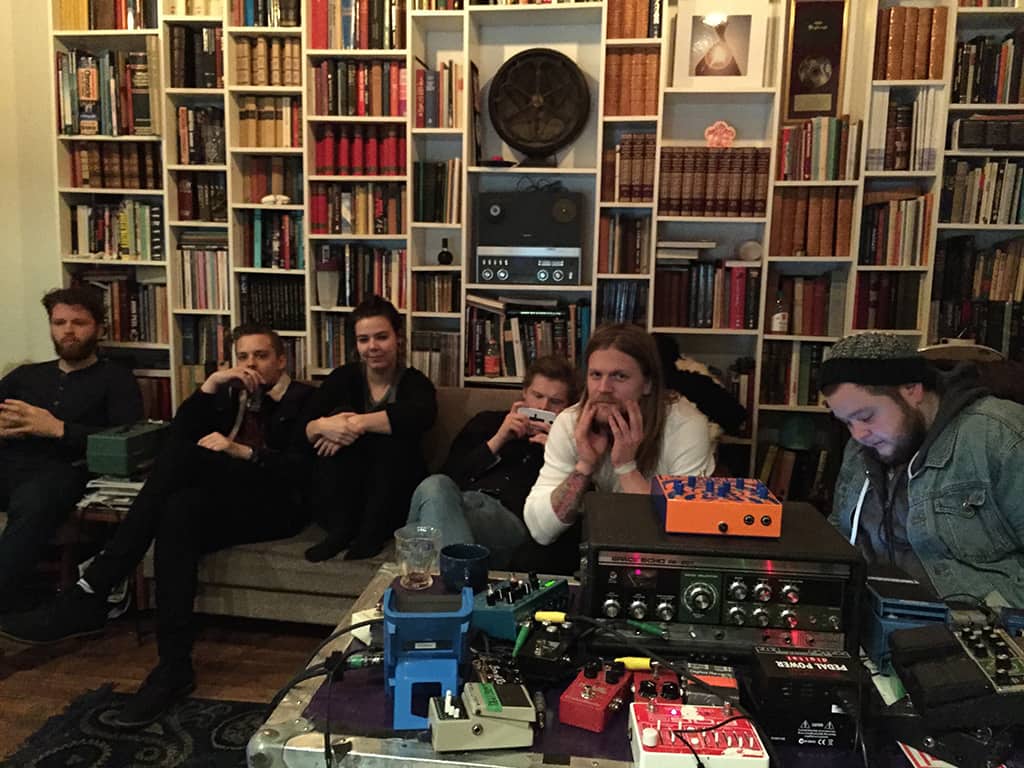


“We started September 2014, doing about three weeks of pre-production at their rehearsal studio and recording fairly concise demos into their Pro Tools rig. Some of the songs were fairly well-formed, and some changed quite a bit during that process. Crystals was one of the songs that changed considerably. It was a much slower song initially, with only the chorus being up-tempo. I felt that it might be exciting for the song to take off right from the beginning, so we took that path. The driving toms during the verses are key to the song’s propulsion and were worked out in rehearsal. Arnar [Rósenkranz Hilmarssonis] a fantastic drummer with a very creative approach, and he’s also seriously loud. We approached the arrangements from different angles and gradually the best ones stood out. That way when we got to the actual recording sessions — which took place at Sundlaugin Studios in Reykjavik during October, November and December — there weren’t too many surprises and it was just a matter of trying to get the best performances. In general, when working with a band, you want them to feel comfortable during recording, and not to sit there thinking and trying to get their parts right.
“We had a pretty complete collection of demo recordings with rough mixes by the time we entered Sundlaugin. Before we began tracking a song we would typically reference these demos for tempo and feel, then go ahead and cut the song. Sometimes with a click but most often without as they tended to sound better that way. After comping takes, we began the process of overdubbing and often completely replacing elements of the basic tracking. Part of their process includes doing a lot of drum overdubs, with toms and snares, percussion and stomps and handclaps, and all kinds of madness.
“As far as studio gear is concerned, I brought over a lot of gear from El Dorado, because even though Sundlaugin is pretty loaded, particularly in the microphone department, I wanted to remain familiar with the signal paths. The most essential piece of kit I brought were my Neve BCM10, which has 10 vintage 1073s, along with some vintage Universal Audio 1108s. The rest was the usual stuff in my rack, like UREI 1176s, Neve 33609, Roger Mayer RM58, Esoteric Audio 660s, Distressors, Shadow Hills Mastering Compressor, The Equinox, plus a bunch of my modular synths. I also brought my Burl Mothership converters, as they are the only multitrack A/D that I can really get behind.”

“At the top of the session are kick and snare trigger aux tracks. Native Instruments’ Battery and Addictive Drums are in my mix template by default, just in case I need them. In this session I added some Battery snare samples, and some claps, stomps and synthetic drums in the choruses. My Battery sample library has thousands of sounds I’ve collected over the years. The 3-4 sends on several of the drums aux tracks go to the GML8900, and the 27 send goes to the Prism to RCA chain. Bus 59 is a UAD AMS RMX18 plug-in for drum reverb. The toms have a Decapitator plug-in, which gets turned on in the choruses. The toms and acoustic guitar really propel this song, and it was important they worked well together.
“The bass aux has an Oxford plug-in EQ rolling off the subs, and the Brainworx bx-digital V2 to reduce some of the typical resonant notes one deals with on a bass guitar recording with passive pick-ups. The track is also volume automated to further even out any resonances. The acoustic guitar aux also has the Oxford EQ, again to take out some of the bottom end that I didn’t need. It also went to the Hughes SRS to widen them up a bit and a UAD EMT 140 reverb.




“I tried mixing Nanna [Bryndís Hilmarsdóttir]’s and Raggi’s [Þórhallsson] vocals a couple of different ways. The actual lead vocal aux has a Renaissance De-esser on it, going into a UAD 1073 plug-in, which is fantastic, a UAD dbx160 compressor and the Decapitator to add some edge. 28 goes to the Standard Audio Stretch, which adds a bit of top end to the vocals. The Stretch mimics the breathy, steamy high end that you could get from old modified Dolby units, of which I have many. Nanna and Raggi’s lead vocals blend really well together naturally, so I treated them very similarly. You want to put them in a similar space.


“The session was at 24-bit/96k. For the final mix print I went via Esoteric Audio Research 660s to GML EQ mix chain and printed back into the session using a separate Pro Tools rig with a JCF Latte stereo A/D converter. I sent 96k files to Bob Ludwig for mastering. I also print to a Soundblade rig, running at 16-bit/44.1k for references.”
SHADOWING THE SSL
Mid-January 2015, a month after the recordings at Sundlaugin were completed, OMAM and Costey reconvened at El Dorado for, “more overdubs, mostly vocals, a bit of programming, and working with David Campbell on horn and string arrangements. We did split things out over my SSL K for this, because it’s easier to have lots of inputs coming into the console at the same time, ready to go. After that we began the mixing process. I’d been listening to the Equinox all the time when we were in Iceland, and had become accustomed to the sound, but I still did a mix of Crystals on the SSL, and another using the Equinox, and again I decided to go with the latter. To be perfectly honest though, I don’t think the band cared either way.
“We had already created the template, with the 60 tracks at the top mimicking my SSL layout, and the typical mix process was for my assistant Mario to load our recording session into the mix template session and set it up. I would then reference the latest rough mix for balance and get the tracks knocked into shape from that perspective. Once that sounded good I would have a look through the individual audio tracks, combining different groups of instruments to check relationships. The drum/acoustic guitar relationship was very important; the acoustics really were an extension of the drums and percussion. The toms in particular had a lot of overtones in the low mids, and I had to tame these to maintain some amount of clarity. To be honest, that was a bit of a challenge. The solution was mostly reductive EQ and careful monitoring of room mics.
“The main room at Sundlaugin, which used to be a swimming pool, sounded so good that the temptation was to crank it up on everything, but you obviously can’t do that. I tended to have the room sound on the kit. Then I backed off with overdubs and used artificial reverb if necessary. I mixed Crystals a number of times, and each time we were looking to refine the arrangements of the guitar melodies. One of the handy things about being a mixer and a producer is that the producing process spills over into the mixing. You can completely re-arrange everything at the last moment if you choose to.”
“I’m very proud of this album and I know the band is as well. Crystals did quite well on the radio but I don’t expect this album will duplicate the sales figures of the first album; no one expected that. The band were pushing back a bit against the sound that defined them on their debut and we were all working to establish something that feels perhaps more lasting and emotional. You don’t want to live or die by your radio hits. The album reached No. 3 in the US which is the highest US chart position for any Icelandic album, No. 4 in Australia, and the response to the album is still growing. I think the band are in it for the long road. They are massively gifted people.”


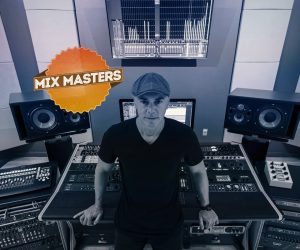




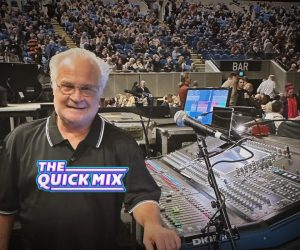








RESPONSES